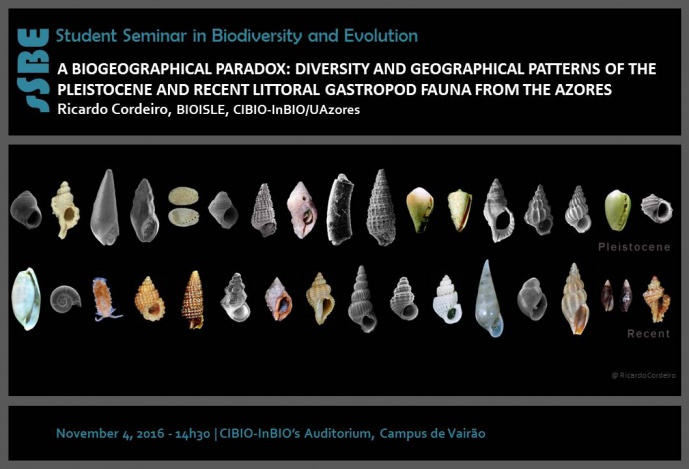A BIOGEOGRAPHICAL PARADOX: DIVERSITY AND GEOGRAPHICAL PATTERNS OF THE PLEISTOCENE AND RECENT LITTORAL GASTROPOD FAUNA FROM THE AZORES

STUDENT SEMINAR IN BIODIVERSITY AND EVOLUTION

For any study related with biodiversity and biogeography from a given geographic area is of essential importance to have up-to-date lists of species. Therefore, as a result of the study of the most important Last Interglacial (MIS 5e) fossiliferous sequences of Santa Maria Island and the review of the Recent marine mollusc collection held by the Department of Biology of the University of the Azores, we will present the latest data on the biodiversity of the Pleistocene and Recent littoral gastropod fauna from the Azores. We will also relate these new data with the biogeographic patterns affecting the marine fauna of the Azores, pointing out some hypotheses about the processes and routes of dispersal to the archipelago.
Ricardo Cordeiro is a marine biologist primarily focused on taxonomy, diversity and biogeography of marine molluscs. Currently, Ricardo is a PhD student attending the 3CBIO doctoral program at the University of the Azores and he is working under the supervision of Dr. Sérgio Ávila (CIBIO-InBIO/UAc) and Prof. Frias Martins (CIBIO-InBIO/UAc) as part of the Biodiversity and Islands (BIOISLE) group.
Image credits: Ricardo Cordeiro